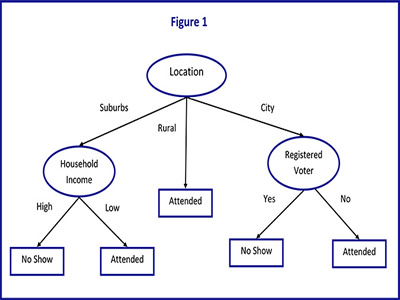Objectives:
The objectives of this section are:
to introduce you to the decision tree classifier
to explain the various parts of a decision tree
to present you with some advantages of using the decision tree classifier
to define Occam’s Razor and its application in decision tree construction
Outcomes:
By the time you have completed this section you will be able to:
to recognize the various parts of a decision tree
to list some advantages of decision tree
to identify the best tree based on Occam’s Razor
Decision Trees
What is a Decison Tree?
There are many techniques used in classification, this section focuses on the Decision Tree classifier. A Decision Tree classifier looks like a tree with leaves and nodes. A decision tree uses information that we know about an item to help us arrive at a particular predefined conclusion. By asking a series of pointed questions a decision tree is constructed, and each directed edge below serves as a question and the nodes of the trees are the corresponding answers, the leaf nodes are the classes that each entry eventually fits into. To the right is a possible decision tree diagram for the Town Hall Information Data set provided in Section 1. As you can see each leaf node is either the class “No Show” or “Attended” and all the other nodes (internal and root nodes) serve as questions that help further split the data.

Advantages of Decision Trees
- Comprehensibility: the representation of decision trees are in a form that are intuitive to the average person and therefore require little explanation. Just by looking at the diagram one is able to follow the flow of information.
- Efficiency: the learning and classification steps of decision tree induction are simple and fast.
- Extendibility: decision trees can handle high dimensional data and are easy to expand based on the data set and being that their classifiers do not require any domain knowledge they can be used for exploratory knowledge discovery.
- Flexibility: decision trees are used in various areas of classification including the manufacturing and production, financially analysis, molecular biology, astronomy and medical fields.
- Portability: decision trees can be combined with other decision techniques, they currently serve as the basis of several commercial rule induction systems.

